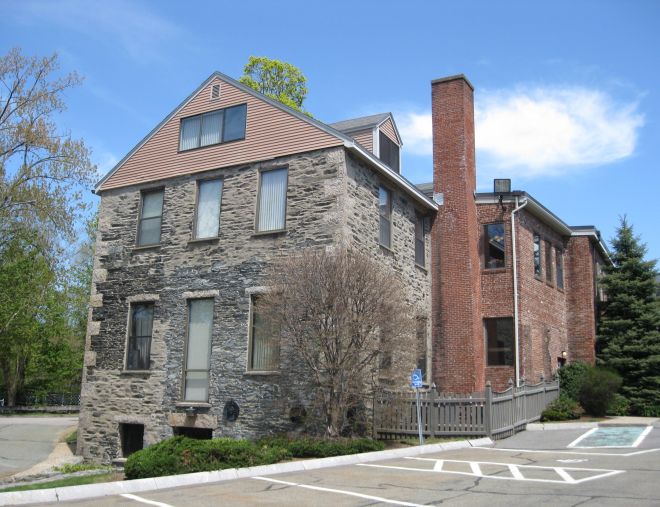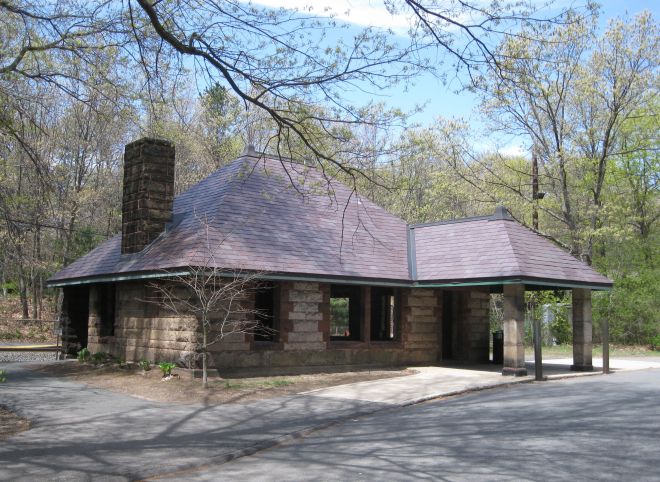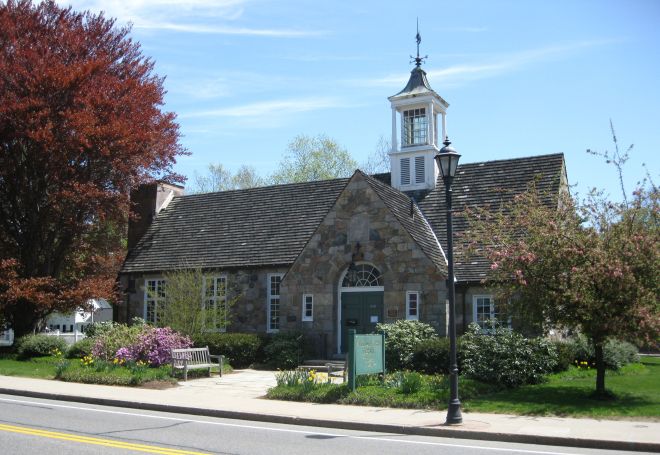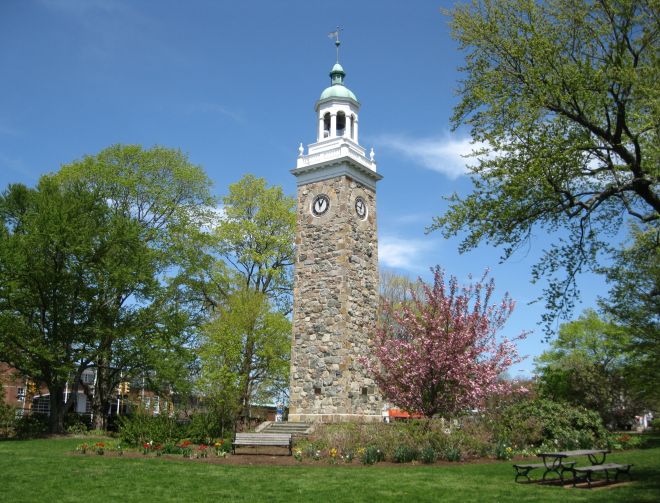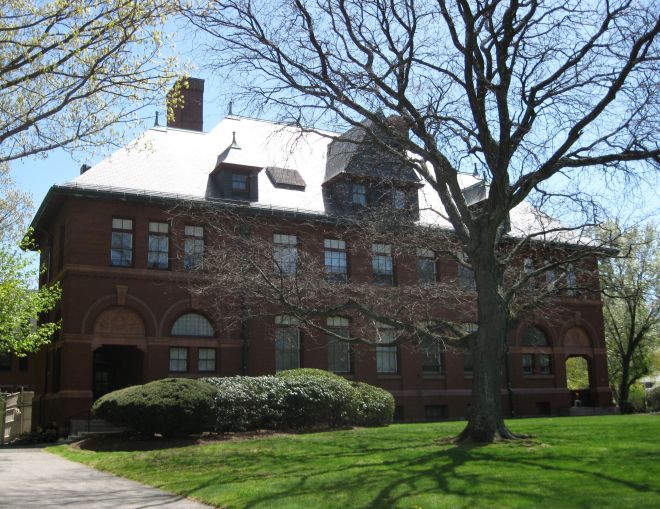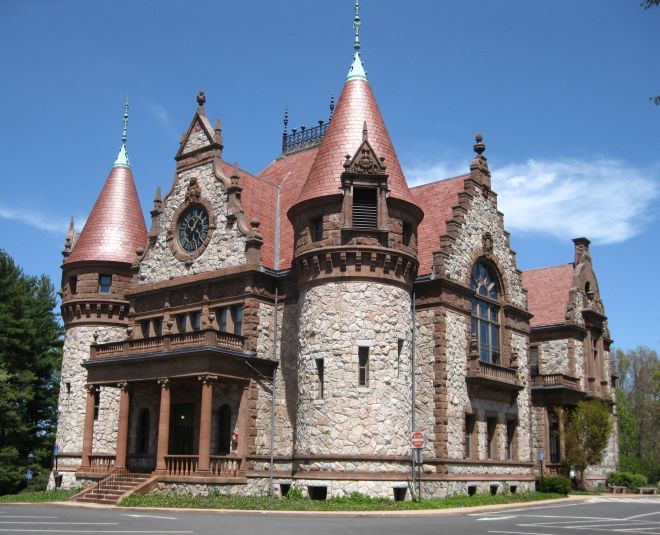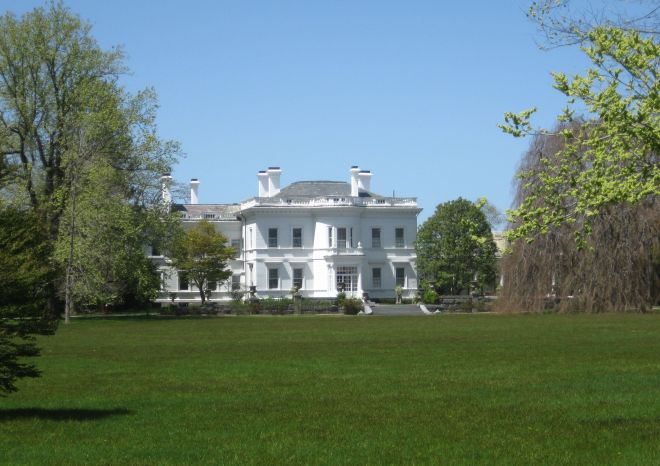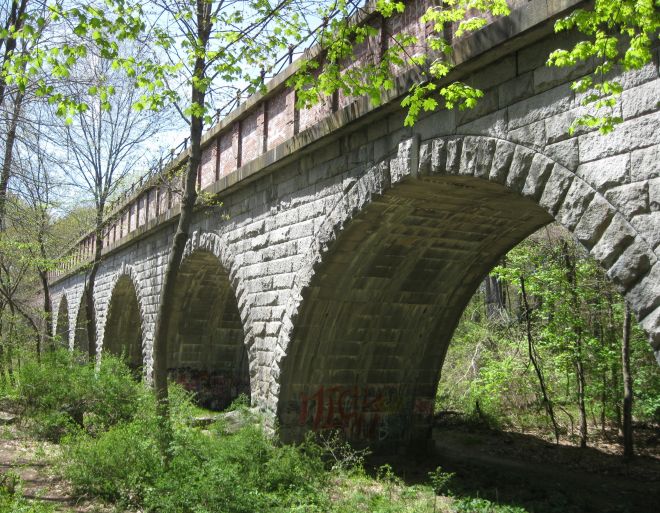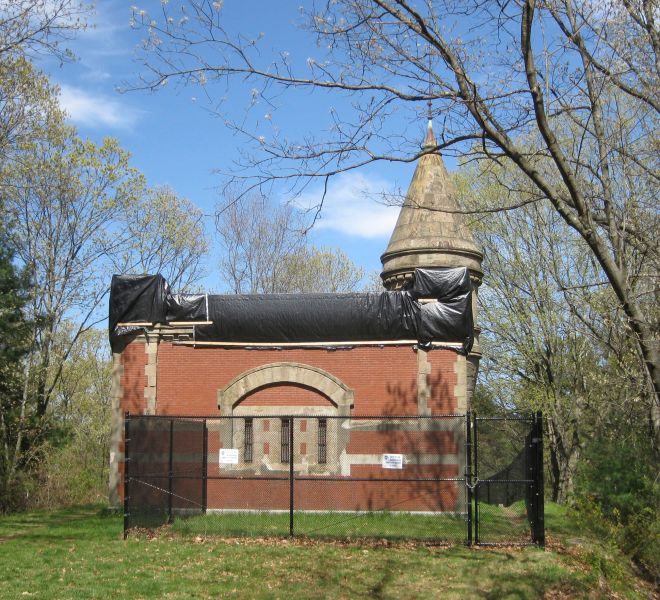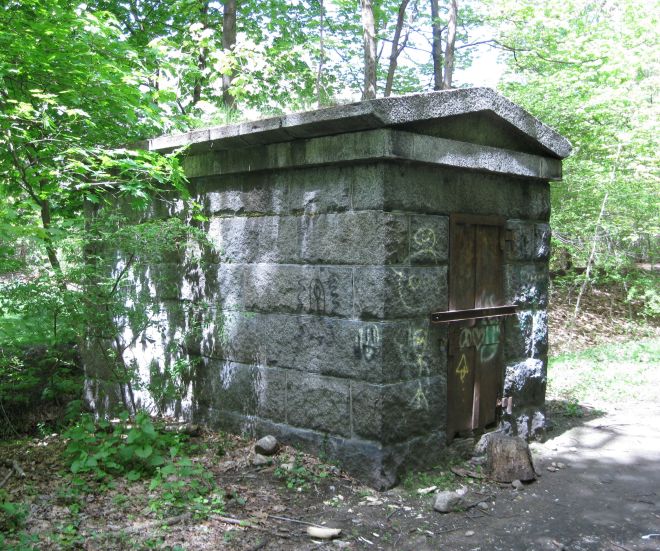If you followed the 2013 Annual Town Meeting, you probably remember Article 20 that asked for funds to restore the chimney and northeastern wall of the Wellesley Hills Branch Library. Although the Article passed, there had been some heated debate in the weeks leading up to Town Meeting. In particular, people wanted to know whether it was necessary to spend $250,000 to fix the structure. Why not find a cheaper restoration option or even remove the chimney altogether?
Well, the simple answer to that question is that the Branch Library is listed on the National Register of Historic Places, which means that it is deemed historically significant by the United States Department of the Interior — one of only seven such historic sites in Wellesley. If the Town voted to reconstruct the chimney/wall in any way other than to its original appearance and/or use construction methods that were not sensitive to the historic nature of the building, it could result in the delisting of the Branch Library from the National Register. Fortunately, enough Town Meeting members understood this and voted in support of the Article. But it wasn’t close to unanimous.
I would like, therefore, to spend this post educating those who didn’t support the Article about what it means if a building or structure is listed on the National Register of Historic Places, as well as familiarizing everyone with the sites in Wellesley that are on the list.
Simply put, the National Register of Historic Places (NRHP) is the official list of buildings, structures, sites, districts, and objects deemed worthy of preservation by the Federal Government (in conjunction with state and local governments), as authorized by the National Historic Preservation Act of 1966. It is administered by the National Park Service, which operates under the umbrella of the Department of the Interior.
So why was this government program created? I think the following excerpt from a brochure produced by — not surprisingly — the National Park Service best answers this question:
“America’s historic places embody our unique spirit, character and identity. Representing important historical trends and events, reflecting the lives of significant persons, illustrating distinctive architectural, engineering, and artistic design achievement, and imparting information about America’s past, historic places tell compelling stories of the Nation, and of the States and communities throughout the country. The National Register helps preserve these significant historic places by recognizing this irreplaceable heritage. Its primary goals are to foster a national preservation ethic; promote a greater appreciation of America’s heritage; and increase and broaden the public’s understanding and appreciation of historic places.”
And now, without further ado, here are the seven NRHP listings in Wellesley (all photographs taken by Joshua Dorin in May 2013):
The seventh listing is actually a district — the Hunnewell Estates Historic District — that includes a large number of mansions and other buildings. Below are just two of them:
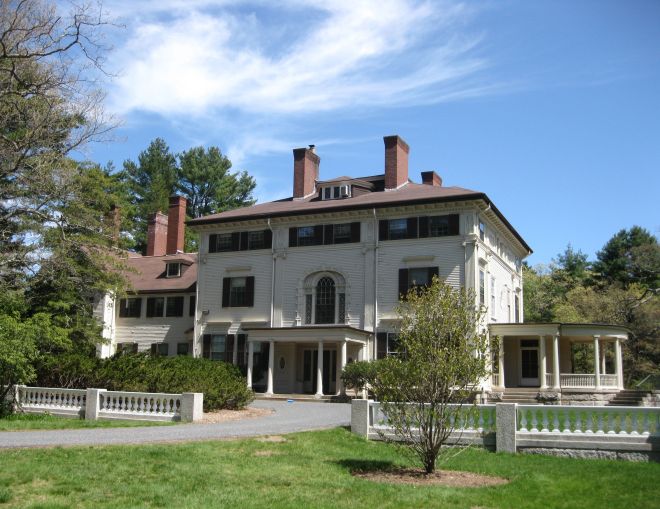
‘The Pines’ (Estate of Isabella Pratt Hunnewell) — originally built in 1891 but burned down and rebuilt in 1894
There are actually two more listings — the Sudbury and Cochituate Aqueducts — but I didn’t include those above because they are part of multi-town historic districts.
Now tell me. If you had to guess these seven (well…nine) listings, how many would you have gotten? Three? Four? Maybe if you’re a real Wellesley history junkie, you got more than that. But if you’re like the average Wellesley resident, you probably didn’t name that many. And that pretty much explains why there was a debate over the restoration of the Hills Branch Library. Many Wellesley residents are apathetic towards or unaware of the history of their town.
Why is that? Just look at the following list of cities and towns, ranked in order by the number of NRHP listings:
Boston: 314
Cambridge: 228
Newton: 190
Waltham: 113
Brookline: 100
Arlington: 63
Bedford: 56
Concord: 31
Milton: 27
Sherborn: 24
Lexington: 18
Marlborough: 18
Framingham: 15
Weston: 14
Needham: 12
Lincoln: 11
Natick: 10
Acton: 8
Watertown: 8
Dedham: 7
Medfield: 7
Wellesley: 7
Belmont: 6
Sudbury: 6
Holliston: 5
Burlington: 4
Millis: 4
Ashland: 3
Wayland: 3
Carlisle: 2
Dover: 2
Hopkinton: 2
Westwood: 2
As you can see, Wellesley is in the lower half of the list. Although it’s not surprising that our town is far below the likes of Boston, Newton, and Concord — cities and towns with extremely rich histories — I find it ridiculous that we have fewer NRHP listings than Needham and Weston, two neighboring towns that have similar histories.
Part of the reason that Wellesley ranks so low is that there have been a few buildings that should have been listed on the National Register but were razed in recent years: the 1938 High School, the Wellesley Inn, and the clubhouse of the Wellesley Country Club (the former Needham Town Hall). There is also the Wellesley Hills Railroad Station, built in 1885 by Henry Hobson Richardson (architect of Trinity Church in Copley Square) with the assistance of landscape architect, Frederick Law Olmsted (designer of Boston’s Emerald Necklace and New York City’s Central Park). Unfortunately, the station was converted to retail stores a half century ago and the landscaping was removed in order to create the parking lot that stretches almost all the way to the Rockland Street bridge. The Wellesley Square Railroad Station would have also qualified had it not been razed in 1962 and replaced with the Wellesley Post Office.
We also were unlucky when College Hall at Wellesley College and the third edifice of the Wellesley Village Congregational Church burned down in 1914 and 1916, respectively. (College Hall would most certainly have qualified for National Historic Landmark status, an especially selective designation for sites that “possess exceptional values or qualities in illustrating or interpreting the heritage of the United States.” There are only 186 National Historic Landmarks in all of Massachusetts, 57 of them in Boston. Wellesley has none.)
If you’re counting, had those buildings and structures not been razed or bastardized beyond recognition, Wellesley could have had 14 listings on the National Register. There are also several other houses and buildings currently standing in Wellesley that should be on the list but for some reason are not. It could be that the owner doesn’t want it listed. Or that no one has bothered to do the necessary work to secure a nomination (which I’ll admit is not a simple process and takes several years to complete).
Furthermore, I think there is a perception among property owners that having one’s house or building listed on the NRHP will diminish its marketability. Perhaps potential buyers would be turned off by restrictions placed on the property. But what restrictions are they worried about? Owners of private properties that have a NRHP designation can do whatever they want to them. They can even raze them if they so desire. The only restrictions arise when Federal funding is involved — most often in the form of tax credits and preservation grants. In those cases, any renovation or restoration must follow certain standards that are set by the Department of the Interior.
So, I’d therefore like to encourage owners of historic properties in Wellesley to consider a National Register designation. Although not every old house or building qualifies for NRHP status, I know of at least a handful that certainly deserve such a recognition. Isn’t it about time that Wellesley’s rich history gets the spotlight it truly deserves?
Sources:
- Wellesley Historical Commission files: Elm Park and Sprague Memorial Clock Tower; Intermediate Building; Rosemary Brook Siphon Chamber Building; Waban Bridge; Wellesley Farms Railroad Station; Wellesley Hills Branch Library; Wellesley Hills Railroad Station; Wellesley Town Hall; 35 Walnut Street; 828 Washington Street; 845 Washington Street;
- The National Register of Historic Places Brochure
- The National Register of Historic Places Database
- Report of the Cochituate Water Board to the City Council of Boston (1852)
- Wellesley Townsman: 20 March 1914; 5 January 1917; 21 August 1958; 28 June 1962
- Wikipedia.org [National Historic Landmark]

